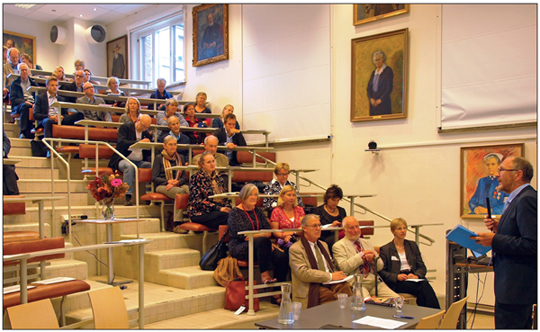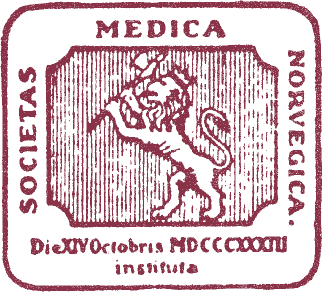British health care reforms and Norwegian health care
Michael Quarterly 2011;8:423–7.
The British government’s white paper entitled, Equity and excellence: Liberating the NHS, suggests radical reforms to the National Health Service. The reforms open up the provision of health care to private competition, and introduce more market orientation of health services. The proposals are seen by many as a serious threat to the core values of the universal health care system established in 1948. As the NHS has been a role model in many ways for the Norwegian health care system, this development might have consequences for us. If the NHS fails, we will have to look for other sources for inspiration to help keep the ideals of publicly funded national health care alive in Norway.
Both medicine and health care are international, and just as Norwegian medicine is strongly influenced by international research, our health care system is influenced by trends and developments in health care systems in other countries. The development in countries that have served as role models for us is of particular relevance, which is why we have followed the National Health Service (NHS) in the United Kingdom (UK) so closely in Norway.
After it was established in 1948, the NHS quickly became an important institution in the UK. Its status has recently been described in The Lancet in this way: «The UK’s National Health Service (NHS) has been called the national religion. Perhaps it is better described as a totem: a symbol of the state’s duty to care for its people, and of its right to their loyalty. [ ….] Perhaps, since most British people cannot remember life before the NHS, we have forgotten how remarkable it is. Knowing that, if one falls sick, one will be treated, irrespective of ability to pay or personal background, is priceless» (1).
Four papers – one opinion
The British government has recently proposed a radical restructuring of the NHS. England’s existing primary care trusts will be replaced by groups of GPs called general practice commissioning consortiums, which will have their own budgets. These consortiums will negotiate and agree to contracts with hospitals and other health care providers. This restructuring will include a shift from geographically based populations to the provision of more membership- and insurance-based pools as we have come to know them from the United States. The British government’s policy of letting «any willing provider» offer health care paid for by NHS funds could lead to a considerable privatization of the British health care system. It can be said that the Secretary of State for Health will no longer have the responsibility of providing comprehensive care for the population since it will be left to individual units and the market. The providers may even be allowed to reintroduce user charges.
The current debate on British health care reforms was the reason for a seminar in Oslo on September 21, 2011, which was jointly arranged by The Norwegian Medical Society, the Norwegian Knowledge Centre for the Health Services and the Norwegian Directorate of Health (Figure 1). Four papers from this seminar are published in this issue of Michael, with all of the authors seeing the suggested reforms as a threat to the ideals of the NHS.
Sally Sheard, a senior lecturer in history at the University of Liverpool, describes the circumstances of the NHS’ creation. «It could only have happened in this brief window of opportunity at the end of the Second World War» (2). She argues that, «the British love affair with the concept of a universal free healthcare service has prevented, until now, any serious erosion of its function». This love affair seems now to have weakened. Sally Sheard suggests that a closer look at the historical context of the NHS can help to understand its current crisis.
Steinar Westin examines the common ideals of health care in Norway and the UK, as well as the impact that the suggested British reforms may have on Norwegian health care. He concludes that a broader discussion about the general principles for the public funding of health care is needed (3).
«The whole world has a living example of what an already commercialized, and fast becoming industrialized care system does to people, and fails to do for people, in the USA, the richest country in the world», writes Julian Tudor Hart, former general practitioner and a pioneer in family medicine in the UK (4). Tudor Hart is a name known to generations of GPs, including in Norway. He is the author of the 1971 milestone paper, The inverse care law, which states that «the availability of good medical care tends to vary inversely with the need for it in the population served» (5).

Figure 1. From the seminar on the decline of the UK NHS and its possible international consequences in Oslo on Sept 21, 2011. Professor Magne Nylenna is the moderator, and on the first row can be seen (from left) the speakers, Professor Steinar Westin, Dr. Julian Tudor Hart and Dr. Sally Sheard. Professor Allyson M. Pollock is sitting to the right on the second row.
(Photo: Ø. Larsen)
According to Hart, the inverse care law still thrives 40 years later. He reminds us that it is not a law of nature, but a law of the market, and writes, «The further health care gets from the market, the less this law applies, but for most of those 40 years, all political parties have been trying to drag the NHS back to the marketplace» (4). He points to the basic human behaviour of seeming to seek our own advantage, thus leading, among many other consequences, to the tendency of doctors to work with people who are rich and healthy, while avoiding working with the poorer and sicker.
Allyson Pollock and David Price compare universal health systems with market systems (6). Universal systems, such as the NHS, pool their financial risk at the government level. Therefore, their administrative functions focus on needs assessments and resource allocation across geographic populations. In market systems, however, financial risks are allocated across different parts of the system through market contracting. The administrative functions in these systems focus on risk pricing and segmentation among providers and members. Pollock and Price argue that information systems constructed for risk segmentation not only lead to more bureaucracy, but also provide additional impetus for further market reform.
Neither the presentations at the seminar nor the papers in this issue of Michael represent a balanced political view of the British reforms. The British health secretary, Andrew Lansley, has political backing for his shakeup of the NHS in the British Parliament. But reactions to the reform plans have been unusually strong, particularly among professionals as reflected in a series of papers in the BMJ and The Lancet.
Could it happen here?
The National Health Plan for Norway for the next four years states, «that there is a public responsibility to promote health and prevent disease, and to ensure appropriate health care services for the entire population. Everyone should have an equal access to health care regardless of diagnosis, place of residence, personal economy, gender, ethnic background and the individual’s life situation» (7). The political agreement on a publicly funded national health care system in Norway is overwhelming. There are differences as to which extent private providers should be involved, but thus far the basic concept of a national health service has not been challenged.
This does not mean that the situation is uncomplicated. All institutions, whether private or public, must adjust to general developments in society. This refers of course to health care as well. Hence, there have been several reforms over the last decade, with the most important being the specialist service reform of 2000, which established the regional health enterprises, in addition to the list patient system in general practice, which was introduced in 2001. As of 2012, a collaboration reform will be launched that aims at better cooperation between the various levels of care. A continuous update of health care systems is as important as continuous updates of clinical guidelines. This updating should be undertaken with due respect to the core values that underpin our health care, as well as the treatment of individual patients.
The best guarantee for our publicly funded health services is a high level of acceptance and satisfaction among patients and professionals alike. In the seminar discussion, Dr. Tudor Hart pointed to trust as a basic value of health care. Patients must trust their doctors and the health care system, while professionals must trust their leaders and the political system – and the other way round. The maintenance of trust is one of the most important tasks we have. As most politicians seem to be in favour of the national system of today and patients have a fairly high level of satisfaction, in spite of media reports, it is a paradox that parts of the profession may represent a threat. Among general practitioners in particular, there is a tendency to advocate a more market-oriented health care system.
Economically, we are better off in Norway than in the UK these days. Nevertheless, it should be remembered that the establishing of national health services with universal coverage in both Britain and Norway took place under much poorer economies than those of today. As Steinar Westin puts it: «When foreigners look to Norway or the other Nordic countries with some admiration for the welfare legislation and universal free health care, their usual response is «it must be the oil». It is not. It is about ideas (3). These ideas must be kept alive.
Having looked to Britain for inspiration for our national health care for two generations, we are grateful for what we have achieved. As for the future, we may have to search for other ideals. Perhaps we should set even higher goals and, as quoted by Steinar Westin, have the ambition to bring a message to the world that we ourselves have developed a health care model worth looking at for others (8).
Literature
The Lancet. The NHS: From religion to philosophy. Lancet 2009: 373: 434, doi:10.1016/S0140–6736(09)60147.
Sheard S. A creature of its time: The critical history of the creation of the British NHS. Michael Quarterly 2011; 8:428–41.
Westin S. The beginning of the NHS – and the impact on Norwegian health care. Michael Quarterly 2011; 8:476–89.
Hart JT. Which future for the UK NHS? Michael Quarterly 2011; 8: 442–59.
Hart JT. The Inverse Care Law. Lancet 1971; i:405–12.
Pollock AM, Price D. The break up of the English NHS: the new market bureaucracy needs information systems based on members and not geographic populations. Michael Quarterly 2011; 8:460–75.
Meld. St. 16 (2010–2011). Nasjonal helse- og omsorgsplan (2011–2015) [White paper. National health plan (for Norway) (2011–2015)].
Sigurdsson JA, Stavdal A, Getz L. The Nordic Congress of General Practice: A gateway to a global treasure? Scand J Prim Health Care 2006; 24: 196–8.
The Norwegian Knowledge Centre for Health Services
P.O. Box 7004 St. Olavs plass
N-0130 Oslo
Norway
magne.nylenna@kunnskapssenteret.no
